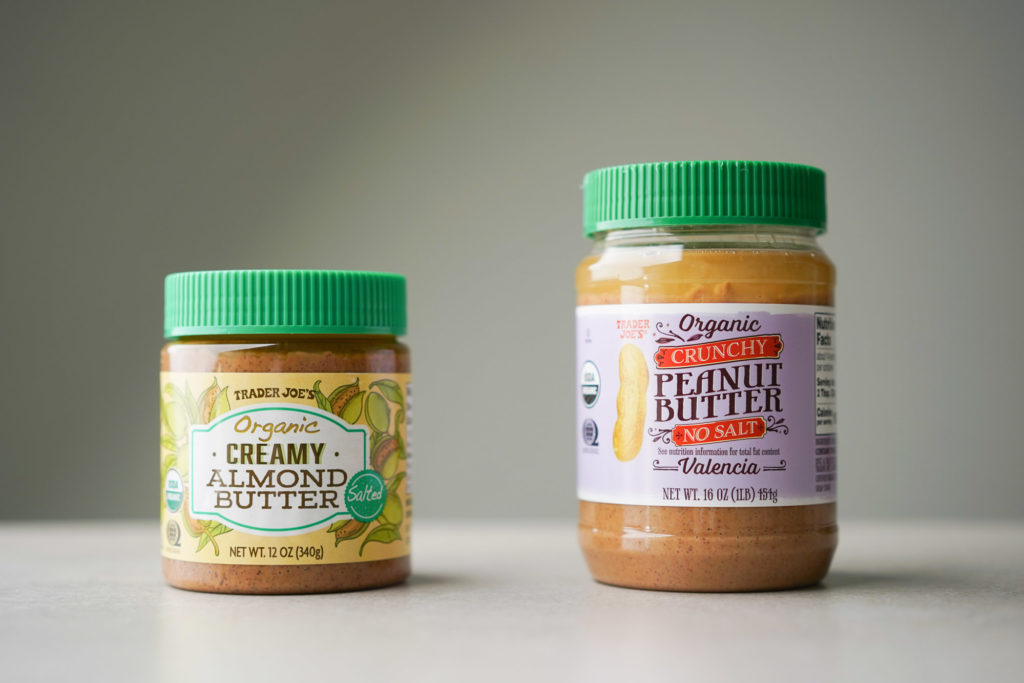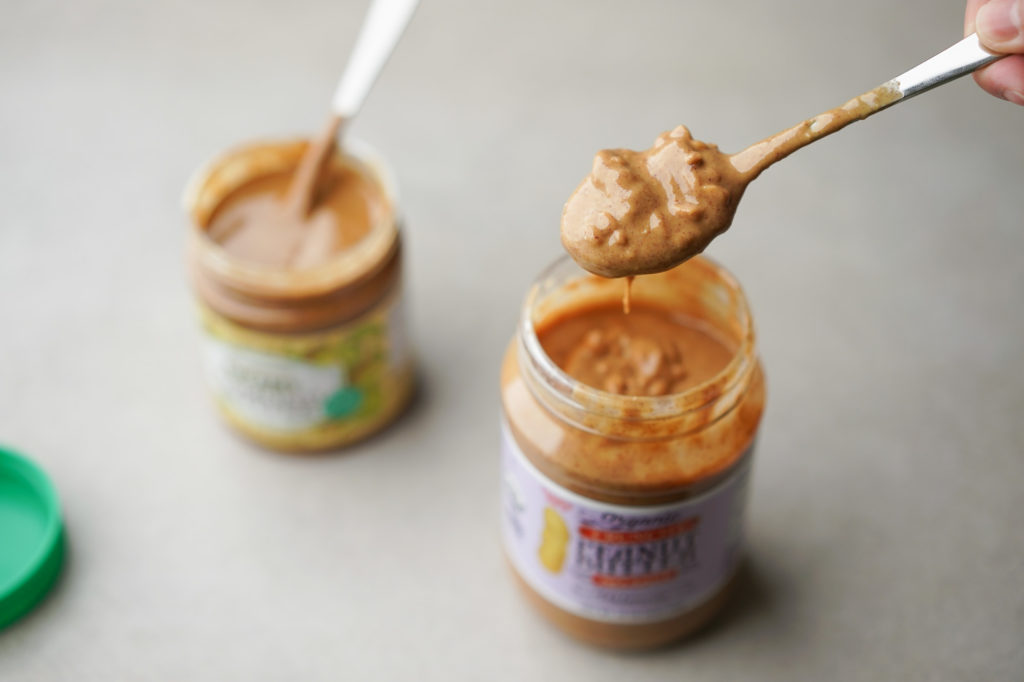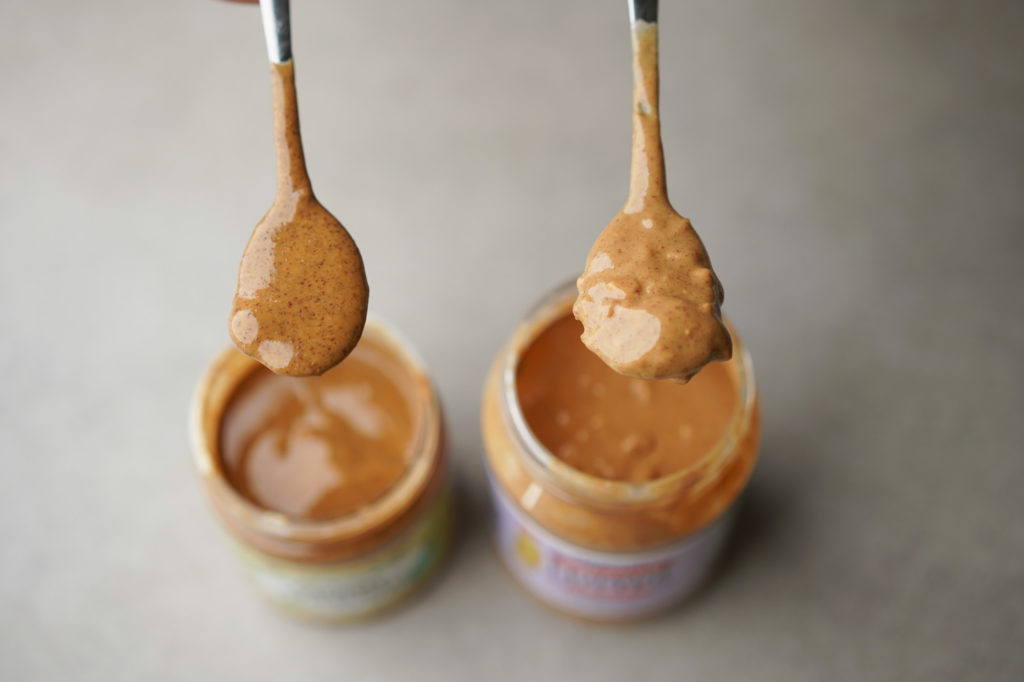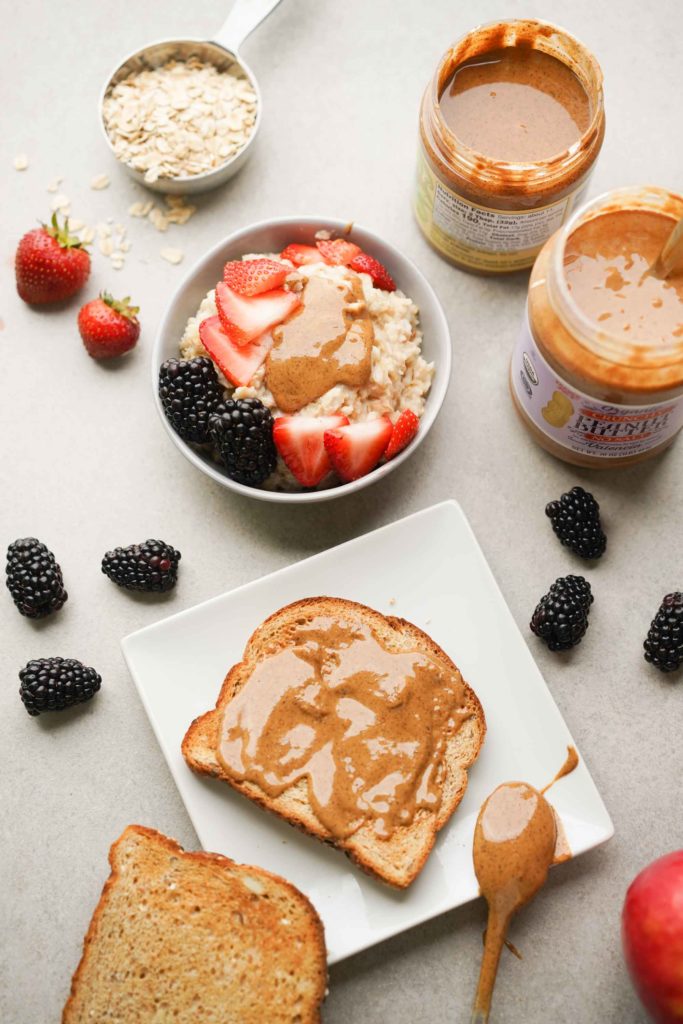Almond Butter vs. Peanut Butter: Which is Healthier?
If you’re anything like me, almond butter and peanut butter are staples for an easy breakfast or quick snack. I use them to top my oatmeal, or sometimes eat a spoonful with chocolate chips for a treat.
While nut butters are delicious, they’re often a misunderstood food. They’re high in healthy fats, but this also makes them calorie-dense. Remember, a gram of fat has 9 calories, while a gram of protein or carbs has 4. So, while nut butters provide valuable nutrients, it’s easy to eat a portion size that’s high in calories. I like to measure my nut butter out to make sure it’s my desired portion size. Typically around 2 tablespoons.

Another thing to consider is the type of almond butter or peanut butter you’re choosing. I suggest opting for natural options, which has less sweeteners and hydrogenated oils.
Almond Butter vs. Peanut Butter Nutritional Information
This chart compares natural almond butter, regular almond butter, natural peanut butter, and regular peanut butter for a 2 tablespoon portion size, so you can understand the nutritional info of each.
Remember that each brand will vary, so check the label when choosing your nut butter.
| Laura Scrudder’s Smooth Peanut Butter (Natural) | JIF Creamy Peanut Butter | Justin’s Classic Almond Butter (Natural) | |
| Calories | 180 | 190 | 190 |
| Total fat (g) | 16 | 16 | 18 |
| Saturated fat (g) | 2 | 2.5 | 2.5 |
| Protein (g) | 8 | 7 | 7 |
| Fiber (g) | 3 | 2 | 3 |
| Sugar (g) | 1 | 3 | 1 |

Calories
The difference is calories is essentially negligible. Two tablespoons of almond butter and two tablespoons of peanut butter will both have around 180-200 calories, depending on the brand. If you’re measuring “healthiness” by number of calories the good news is that you can choose whichever you prefer!
Protein
Both peanut butter and almond butter are good sources of plant-based protein. Peanut butter tends to have slightly more protein than almond butter.
Fiber
According to the Nutrition Coordinating Center Food & Nutrient Database, ¼ cup of raw chopped peanuts has 3.1 grams of fiber and ¼ cup of raw chopped almonds has 4.1 grams of fiber. Looking at nut butter labels, the fiber per serving for peanut butter and almond butter is similar, but almonds have slightly more fiber.
Vitamins and Minerals
Looking at the micronutrient profiles of peanut butter and almond butter, almond butter is a better source of vitamin E. Peanut butter is a good source of B vitamins, including niacin and folate. Both are good sources of magnesium.
How to Choose Your Nut Butter

When choosing peanut butter or almond butter, make sure to read the label.
Peanut butter can only be labeled as such if it contains at least 90% peanuts. The remaining 10% can include hydrogenated vegetable oil, salt, and sweeteners, according to the FDA. If nut butters don’t meet these standards, they must be labeled as spreads.
When possible, opt for natural and/or organic options that include 1-2 ingredients. Natural nut butters contain the nut and sometimes salt. Typically you have to stir natural nut butters because the natural oils separate. I like to stir my nut butter and then keep it in the fridge, which keeps the consistency denser.
Be wary of too much added salt, added sugar, hydrogenated oils or partially hydrogenated oils (like palm oil), or excess saturated fat (like coconut oil).
Nut Butter Benefits
There are many benefits to eating nut butters, when you eat them in moderation.
- Heart health: According to the American Heart Association, people who eat nut butters have a lower risk of heart disease or Type 2 diabetes. The healthy fats in nuts play a role in this.
- Micronutrients: Nuts are a great source of vitamins and minerals. Micronutrient profiles will vary from nut to nut, as we highlighted above. Nuts are also good sources of fiber.
- Protein: Nuts are great sources of plant-based protein!
The Verdict

So, is almond butter or peanut butter healthier? It depends on what your definition of healthy is. Peanut butter has slightly more protein. Almond butter has more fiber and is richer in certain micronutrients. Both have about the same amount of calories per serving.
In my opinion, you can’t go wrong with either! Just make sure to look at the labels and pick natural options that don’t contain unhealthy additives.
You must be logged in to post a comment.